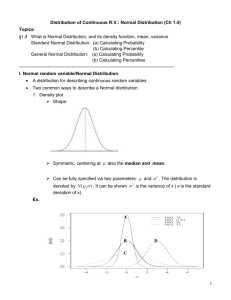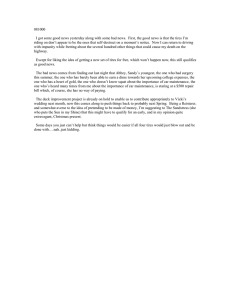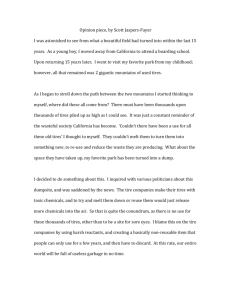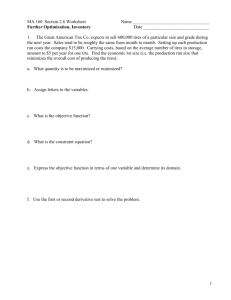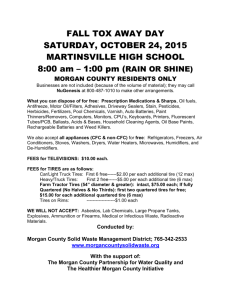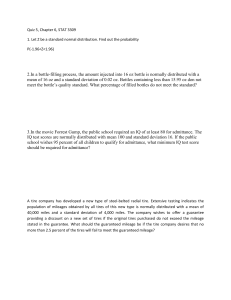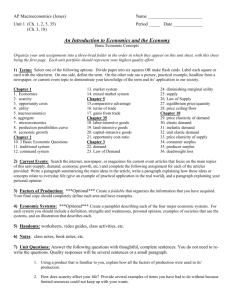Lecture Note 9
advertisement
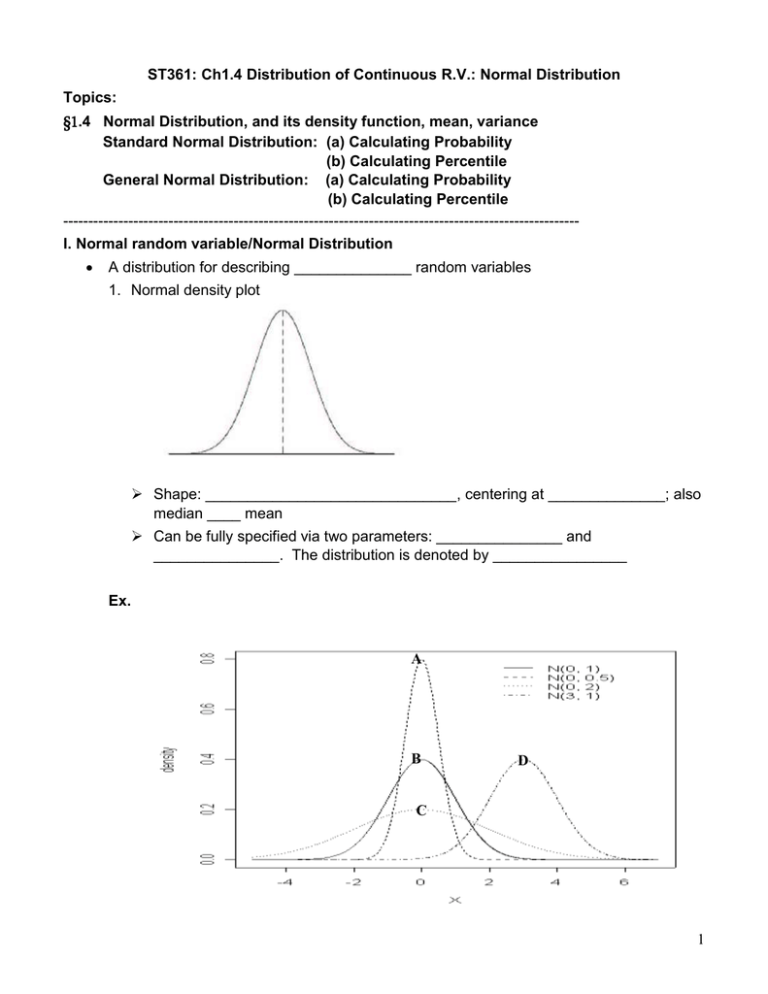
ST361: Ch1.4 Distribution of Continuous R.V.: Normal Distribution
Topics:
§1.4 Normal Distribution, and its density function, mean, variance
Standard Normal Distribution: (a) Calculating Probability
(b) Calculating Percentile
General Normal Distribution: (a) Calculating Probability
(b) Calculating Percentile
------------------------------------------------------------------------------------------------------I. Normal random variable/Normal Distribution
A distribution for describing ______________ random variables
1. Normal density plot
Shape: ______________________________, centering at ______________; also
median ____ mean
Can be fully specified via two parameters: _______________ and
_______________. The distribution is denoted by ________________
Ex.
A
B
D
C
1
2. Normal density function (for your reference):
f ( x; , )
1
2
exp{
(x )2
}
2 2
Ex. If X ~ N (0,1) then f(x) is
II. Standard Normal Distribution
Normal distribution with ________________________. Denoted by ______________
Usually use _____ to denote a standard normal r.v.
Why learn the standard normal distribution?
o Area under the normal curve can only be calculated numerically.
So statisticians have established a table that shows the left tail area under the
standard normal curve of any given number (see the very first page of the
textbook).
o Later we can use such table to solve for all normal distribution.
Use the area table of standard normal curve
(1) Calculate probability
Ex. A variable Z ~ N(0, 1). Calculating the following probabilities:
1. P(Z 1.25) =
2. P(Z -1.25) =
3. P(Z -1.25) =
4. P(Z 2) =
► In general, _______________________________________
2
5. P(-.38 Z .25) =
In general, ______________________________________________________
6. P(Z -6) =
(2) Obtain extreme values
Ex1. A variable Z ~ N(0, 1). Find the following z* that fulfills the probability:
1. P(Z z*) = 0.1
2. P(Z z*) = 0.5
3. P(Z z* or Z -z*) = 0.1
3
Ex2. Consider a standard Normal r.v. Z~N(0,1). At what value of z*, the area to the
right is 2.5%?
Ex3. Consider a standard Normal r.v . Z~N(0,1). At what value of z*, the area
between –z* and z* is 68%?
III. General Normal Distribution
If X has a normal distribution with mean and SD , then we can standardize
X to Z by
Therefore,
P a X b
4
Calculating probability and percentiles
Ex. A variable X ~ N(100, 5). Calculating the following probabilities:
1. P(90 X 125) =
2. P( X 98 ) =
3. Find the x* such that P( X x* )=0.1
► In general, _______________________________________
4. Find the range that contains the MIDDLE 90% of the observations
Ex. X is the diameter of tires, normally distributed with mean 575 and SD 5.
1. P(575 < X < 579)=
2. P(575 X 579)=
5
3. Find the diameter x* such that there are only 1% tires longer than this diameter
4. Find the tires that have most extreme 5% diameters.
IV. Putting everything together…. An overall example:
The diameter of a tire follows normally distribution with mean 575 and SD 5. We have 4 tires,
and the diameters of these tires are independent of each other.
(a)
What is the probability that a tire has its diameter between 570 and 580?
(b)
What is the probability that all 4 tires have diameters between 570 and 580?
(c)
What is the probability that at least one tire is not between 570 and 580?
6
